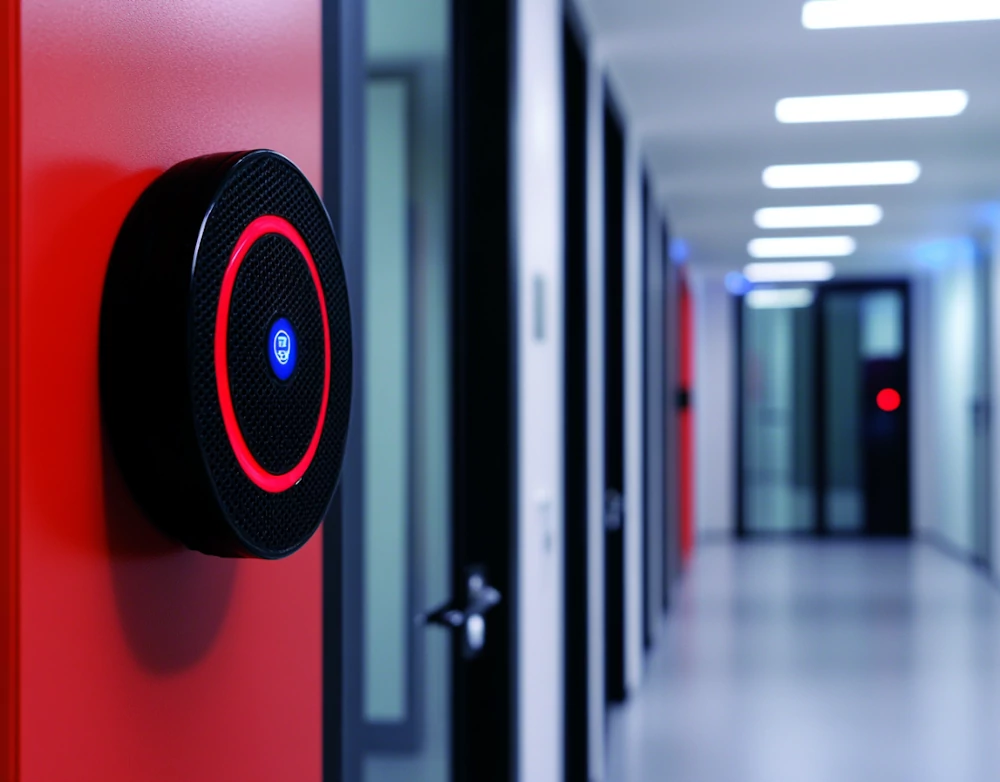The Latest Advances in Fire Detection Technology: Making Homes Safer. In an age where technological innovation touches every aspect of life, fire safety has not been left behind. With rising concerns over residential fires, modern fire detection technology is playing a pivotal role in making homes safer than ever. From smart smoke alarms to AI-powered detection systems, the latest advancements are setting new benchmarks in early warning systems and fire prevention.
Smart Smoke Detectors: The First Line of Defense
Smart smoke detectors have revolutionized fire safety by integrating traditional detection mechanisms with smart technology. Devices like Google Nest Protect and First Alert Onelink combine smoke and carbon monoxide detection with features such as smartphone alerts, self-testing capabilities, and voice warnings. Unlike traditional alarms that rely solely on sound, these devices notify homeowners through mobile apps, even when they are away, ensuring timely action.
Moreover, smart detectors now employ multi-sensor technology, combining photoelectric and ionization sensors to detect both smoldering fires and fast-flaming fires more accurately. This dual-sensor capability minimizes false alarms from non-threatening sources like cooking smoke while enhancing detection precision.
AI and Machine Learning in Fire Detection
Artificial intelligence (AI) and machine learning are transforming fire detection systems by offering predictive and adaptive capabilities. AI-powered detectors analyze environmental data to identify early signs of fire risks, such as unusual heat patterns or chemical changes in the air, before visible smoke or flames appear.
These systems can “learn” from false alarm patterns, reducing unnecessary disruptions. For instance, AI can distinguish between harmless steam and hazardous smoke, minimizing false positives in kitchens and bathrooms. Such predictive technology is especially useful in larger homes or properties with diverse environments.
Integration with Smart Home Ecosystems
Modern fire detection systems seamlessly integrate with smart home ecosystems, such as Amazon Alexa, Google Home, or Apple HomeKit. This interconnectedness allows devices to work in unison—triggering smart lights to illuminate escape routes or unlocking smart locks to facilitate safe evacuation during a fire.
For example, systems like Ring Alarm Pro integrate fire detection with home security. When fire or smoke is detected, the system can alert emergency services automatically, giving residents peace of mind even when they’re not at home.

Advanced Thermal Imaging
Thermal imaging technology, once limited to industrial or firefighting applications, is now entering residential fire safety. Thermal cameras can detect temperature anomalies that signal potential fire hazards, such as overheating electrical components or flammable materials exposed to heat.
These systems are particularly beneficial in detecting fires in their incipient stages, long before smoke or flames are visible. They are being incorporated into high-end security cameras and smart home surveillance systems, offering an additional layer of fire prevention.
Enhanced Connectivity Through IoT
The Internet of Things (IoT) is another game-changer in fire safety. IoT-enabled fire detectors communicate with other devices and systems in the home, ensuring coordinated responses. For example, an IoT-enabled detector can shut off HVAC systems to prevent the spread of smoke or send real-time updates to homeowners and emergency responders.
The use of IoT also allows for remote monitoring and diagnostics. Homeowners can check the status of their fire detection systems and receive maintenance reminders through their smartphones, ensuring that devices remain functional at all times.
Battery Innovations for Reliability
The reliability of fire detection systems is heavily dependent on power sources. Recent innovations in battery technology have improved the longevity and dependability of these systems. Lithium-ion batteries with 10-year lifespans are now standard in many smoke detectors, reducing the risk of failure due to dead batteries.
Additionally, solar-powered backup systems and energy-efficient designs ensure that fire detection devices remain operational even during power outages, which are common during emergencies.
The Future: Intelligent Fire Suppression
The next frontier in fire safety is combining advanced detection with intelligent suppression systems. Emerging prototypes involve sprinklers and extinguishers that activate automatically based on precise data from AI-driven detection systems. Such technology ensures targeted suppression, minimizing water damage and maximizing safety.
Conclusion
Fire detection technology has come a long way from the simple smoke alarms of decades past. Today’s systems leverage smart technology, AI, IoT, and advanced sensors to offer unparalleled safety and convenience. As these innovations become more accessible and affordable, homeowners are better equipped to protect their families and properties from the devastating effects of fires. With continued advancements on the horizon, the future of residential fire safety looks brighter than ever.







